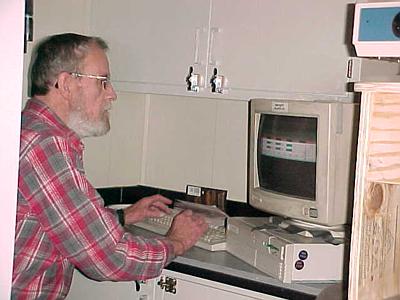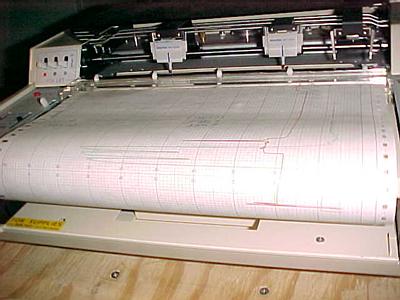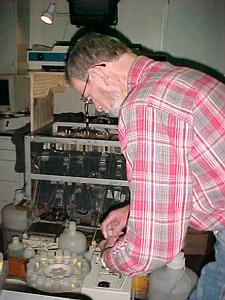6 March, 2000
We continue to steam southwestward to Palmer Station Antarctica.
Most science is on hold until we reach the station. A second mission
of the boat is to deliver building materials to the people
overwintering at Palmer Station so our decks are full, making
trawling and sediment coring difficult. Both if these things require
deploying heavy equipment over the side of the vessel using winches
and booms. We need a clearer deck to do this.
Dr. Dave McMasters continues his water sampling and with the help of
scientist Dennis Guffy is able to analyze the samples on board for
nutrients. Dennis will analyze the 72 water samples for nitrates,
nitrites, silicates, ammoniums, and phosphates using a colorimeter.
The samples are mixed with reagents which will give a pink color to
the nitrates and nitrites and a blue color to the phosphates,
silicates and ammoniums. A thin stream of the sample passes through
the colorimeter where the amount of light passing through the sample
is analyzed for the concentration of the color and creates a graph of
the concentrations of the nutrients based on the intensity of the
color reactions with the reagents. Dennis runs standards of zero,
mid-range and high range nutrients at the beginning and end of all
the samples to calibrate the readings from the machine. He uses a
spreadsheet to record the nutrient peaks from the graph and correct
the readings for any differences indicated by the standards. The
whole process takes about 2 hours.

Dennis uses a spreadsheet to record nutrient data

The nutrient peaks from the colorimeter analysis of the water samples

Scientist Dennis Guffy setting up the water samples for nutrient analysis in the colorimeter
Contact the TEA in the field at
.
If you cannot connect through your browser, copy the
TEA's e-mail address in the "To:" line of
your favorite e-mail package.
|
